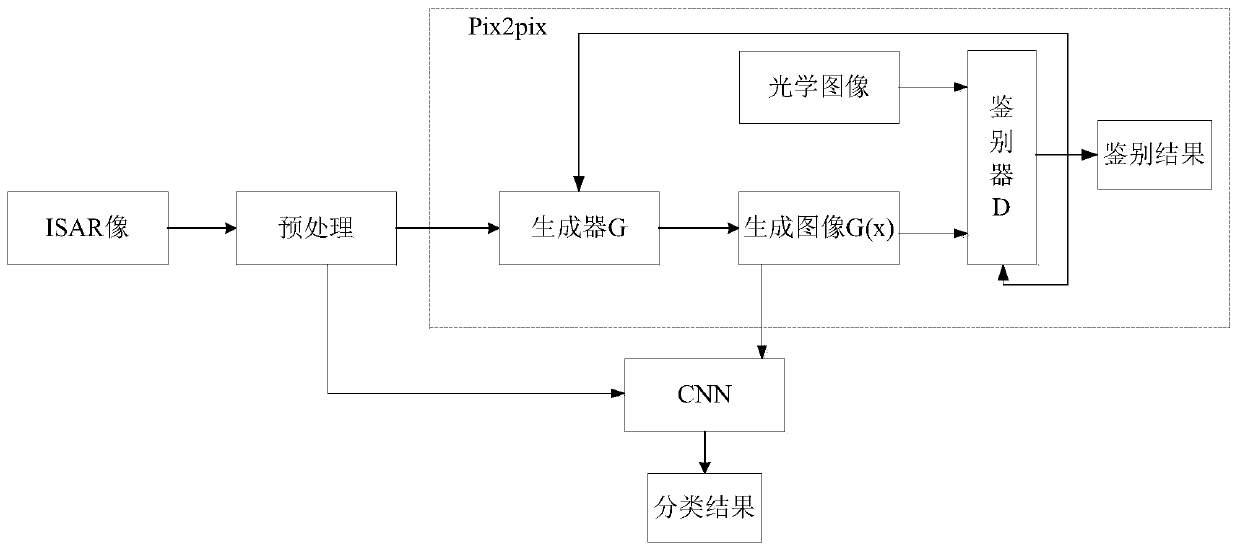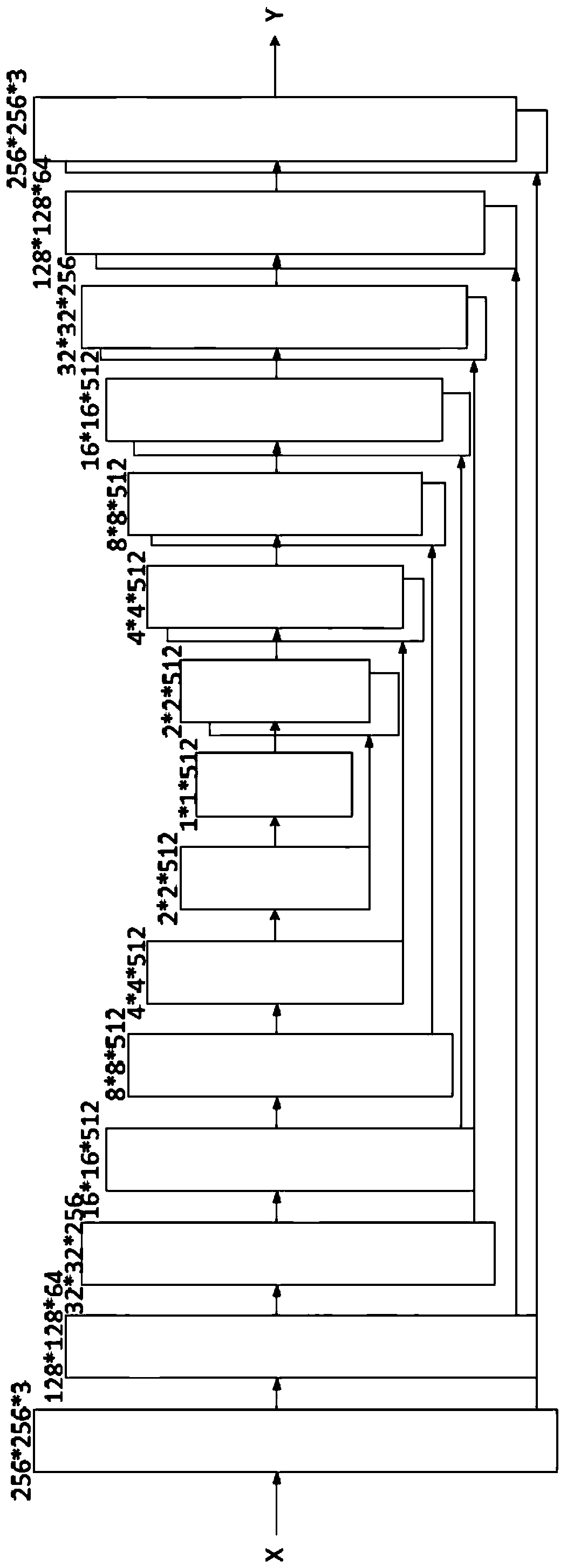Ship ISAR image recognition method based on optical image assistance
An optical image and recognition method technology, applied in the field of ship ISAR image recognition, can solve the problem of low accuracy rate of ship ISAR image recognition, achieve good classification and recognition effect, and improve the effect of accuracy
- Summary
- Abstract
- Description
- Claims
- Application Information
AI Technical Summary
Problems solved by technology
Method used
Image
Examples
specific Embodiment approach 1
[0028] Specific embodiment one: combination figure 1 To explain this embodiment, the specific process of a ship ISAR image recognition method based on optical image assistance in this embodiment is:
[0029] Step 1. Pre-process the ISAR images of ships of known ship types (frigates, destroyers, etc.) in the database. The pre-processing includes denoising processing and image normalization processing;
[0030] Step 2: Use the GAN derivative network Pix2pix to complete the mapping of the preprocessed ship ISAR image domain to the ship optical image (known in the database) domain in step 1, and obtain the trained derivative network Pix2pix;
[0031] Step 3. Use the derived network Pix2pix trained in step 2 to generate the ship optical image from the preprocessed ship ISAR image, and merge the ship optical image with the ship ISAR image. The composite image contains both ship ISAR image information and Optical image information; use synthetic images to construct a training set, train a c...
specific Embodiment approach 2
[0035] Second embodiment: This embodiment is different from the first embodiment in that the ISAR image is preprocessed in the first step, and the preprocessing includes denoising processing and image normalization processing; the specific process is:
[0036] Step 1: Use the global threshold to denoise the ISAR image to obtain the denoised ISAR image of the ship;
[0037] Step one and two: normalize the denoised ISAR image of the ship obtained in step one.
[0038] The other steps and parameters are the same as in the first embodiment.
specific Embodiment approach 3
[0039] Specific embodiment three: this embodiment is different from specific embodiment one or two in that in the step one, a global threshold is used to perform the ISAR image (such as Image 6 ) To perform denoising processing to obtain the denoised ISAR image of the ship (such as Figure 7 ); The process is: see the flowchart figure 2 :
[0040] Step one by one, set the difference threshold t, which is used to determine the global threshold;
[0041] Step one, two, set the initial threshold to T:
[0042]
[0043] In the formula, I(i,j) max Represents the brightest pixel value in the ISAR image of the ship, I(i,j) min Represents the pixel value of the darkest point in the ship ISAR image; i represents the ith row of the image matrix, and j represents the jth column of the image matrix;
[0044] Step 13: Compare the intensity (pixel value) of each pixel in the ship's ISAR image with the initial threshold threshold T, and group the pixels whose intensity is greater than or equal to...
PUM
 Login to View More
Login to View More Abstract
Description
Claims
Application Information
 Login to View More
Login to View More - R&D
- Intellectual Property
- Life Sciences
- Materials
- Tech Scout
- Unparalleled Data Quality
- Higher Quality Content
- 60% Fewer Hallucinations
Browse by: Latest US Patents, China's latest patents, Technical Efficacy Thesaurus, Application Domain, Technology Topic, Popular Technical Reports.
© 2025 PatSnap. All rights reserved.Legal|Privacy policy|Modern Slavery Act Transparency Statement|Sitemap|About US| Contact US: help@patsnap.com



